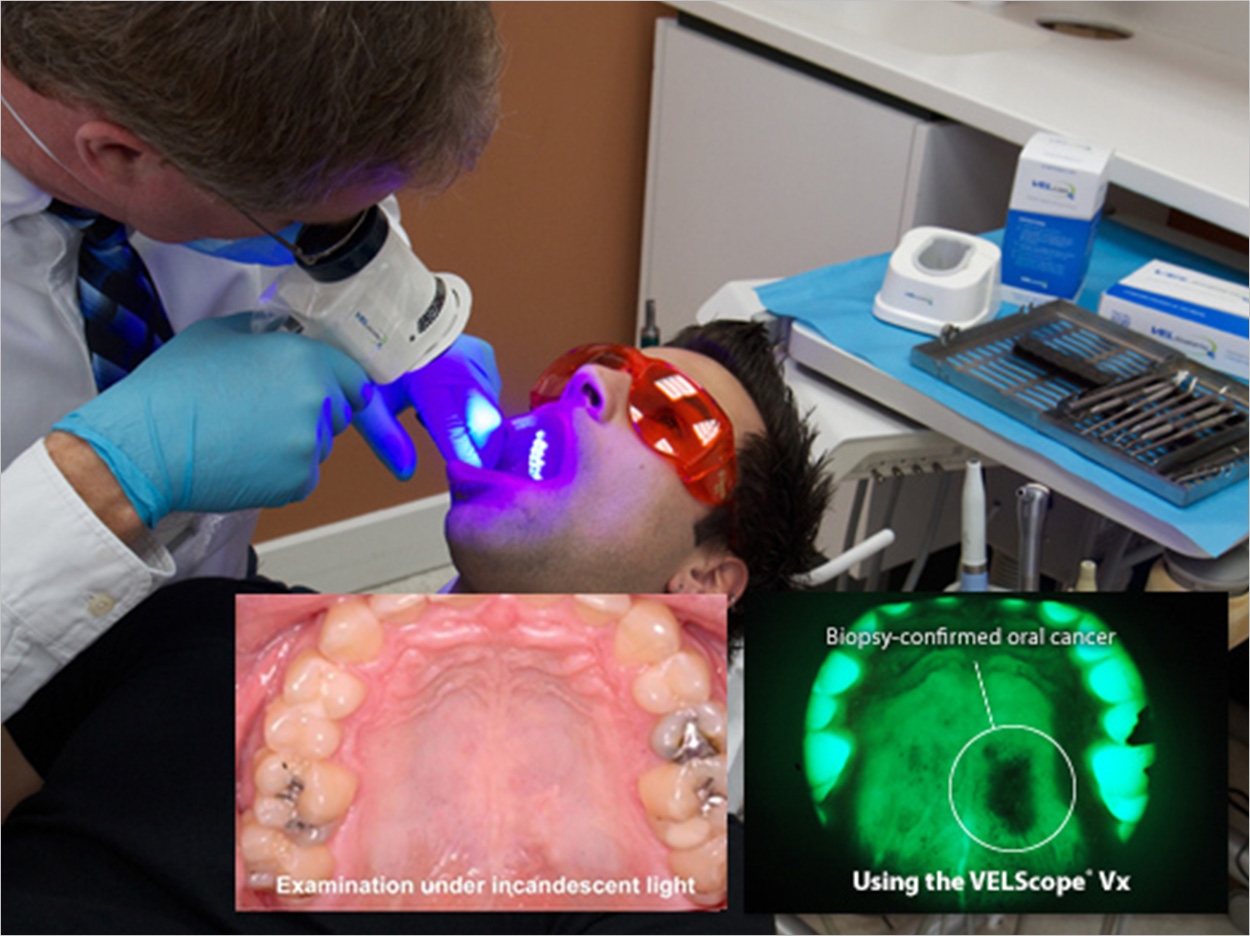
A recent study reports that autofluorescence is a promising and noninvasive tool for the detection of oral squamous cell carcinoma (OSCC) and oral potentially malignant disorders (OPMDs). Its authors also note that using autofluorescence technology as an adjunctive imaging tool may be most reliable in the hands of oral specialists, but the use of promising clinical decision-making algorithms could facilitate its adoption in primary care.
“The results further validate the use of autofluorescence-based imaging tools, such as the VELscope, in the management of tissue abnormalities, including oral cancer, said David Gane, DDS, CEO of LED Medical Diagnostics, which makes the VELscope Vx. “This report adds to the growing body of evidence that corroborates the use of the VELscope as an effective adjunct in screening for the presence of oral cancers and pre-cancers. As acknowledged in the study, adjunct diagnostic aids are desperately needed by frontline dental practitioners to facilitate the early detection of OSCC and dysplasia.”
The study was a meta-analysis of previously published data to assess the accuracy of autofluorescence in diagnosing OSCC and OPMD. It reported the findings of statistical analyses conducted on 24 previously reported studies detecting OSCC and OPMD in 2,761 total lesions. It also reported a pooled sensitivity and specificity of the use of autofluorescence for the detection of OSCC and OPMD of 0.89 and 0.80 respectively.
According to the company, more than 40,000 new cases of oral cancer are diagnosed in the United States each year. Often, oral cancer isn’t diagnosed until it has reached Stage III or Stage IV, leading to high mortality rates. But when it is detected early, the 5-year survival rate rises from less than 50% to more than 80%.
“The authors’ conclusion pertaining to the importance of using autofluorescence within a clinical decision-making algorithm for general practitioners is something that we wholeheartedly support and have been advocating for years,” said David Morgan, PhD, CTO of LED Dental Inc., a wholly owned subsidiary of LED Medical Diagnostics.
“It is also important to note that although this study is a very thorough analysis of the peer-reviewed literature relating to early diagnosis, the VELscope Vx is not approved as a standalone diagnostic device but rather as an adjunct to enhance the visualization of oral abnormalities,” Morgan said.
The study, “Accuracy of Autofluorescence in Diagnosing Oral Squamous Cell Carcinoma and Oral Potentially Malignant Disorders: A Comparative Study with Aero-Digestive Lesions,” was published by Scientific Reports.
Related Articles
Save Lives With Simple Oral Cancer Screenings
Rising Claims Reflect a Need for Better Oral Cancer Detection
It Only Takes a Moment to Detect Oral Cancer












